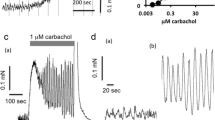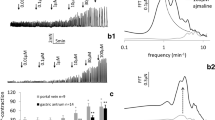Abstract
PROSTAGLANDINS are known to produce two types of effects on smooth muscle. First, they may produce direct and relatively short-lived effects, such as stimulation of the isolated uterus or relaxation of the isolated tracheal chain preparation. Secondly, in doses too low to produce a direct effect, they may produce a long-term potentiation of the effects of other stimulants. These two effects have been investigated in the isolated guinea-pig uterus1. The long-term potentiation of the effects of other stimulants which is induced by brief exposure of the guinea-pig uterus to low concentrations of PGE1 or PGE2 appears to be non-specific with respect to the potentiated stimulant, and can be demonstrated with a variety of stimulants including vasopressin, oxytocin and histamine, and also with electrical field stimulation2. The potentiating effect, however, is fairly specific to prostaglandins of the PGE series. This type of effect is not restricted to the guinea-pig uterus and can be demonstrated on the isolated rat colon or vas deferens (Fig. 1).
Similar content being viewed by others
References
Hall, W. J., and Pickles, V. R., J. Physiol., 169, 90P (1963).
Pickles, V. R., Hall, W. J., Clegg, P. C., and Sullivan, T. J., Endocrinol. Soc. Mem., 14 (1966).
Author information
Authors and Affiliations
Rights and permissions
About this article
Cite this article
CLEGG, P. Antagonism by Prostaglandins of the Responses of Various Smooth Muscle Preparations to Sympathomimetics. Nature 209, 1137–1139 (1966). https://doi.org/10.1038/2091137b0
Issue Date:
DOI: https://doi.org/10.1038/2091137b0
- Springer Nature Limited





